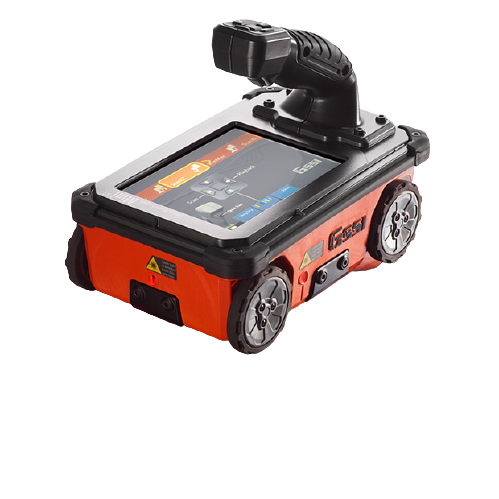RainierGPR Service Areas: Where We Provide Premier Concrete Scanning
RainierGPR Service Areas: Where We Provide Premier Concrete Scanning
Blog Article
Enhancing Job Planning and Execution Through Advanced Concrete Scanning Techniques
In the realm of project planning and accuracy, insight and implementation are important aspects that can make the distinction between success and obstacles. Advanced concrete scanning methods have actually arised as a sophisticated tool set to elevate the standards of task management within the building industry.
Advantages of Advanced Concrete Scanning Methods

Improved Accuracy in Task Analyses
Enhancing job assessments via innovative concrete scanning strategies substantially increases the precision and integrity of building and construction examinations. By utilizing sophisticated scanning modern technologies such as ground-penetrating radar (GPR) and 3D imaging, task groups can currently get in-depth insights into the problem of concrete frameworks, recognizing prospective imperfections or weak points that may not be noticeable to the nude eye. This enhanced degree of precision in project assessments enables building specialists to make more informed decisions concerning repair service and maintenance methods, causing improved overall job outcomes.
Additionally, the boosted precision in project evaluations achieved through sophisticated concrete scanning strategies aids in lessening the danger of unpredicted issues throughout the building and construction phase. By proactively finding covert anomalies within concrete frameworks, such as rebar corrosion or spaces, job groups can address these problems beforehand, staying clear of expensive hold-ups and remodel later on in the job lifecycle. Inevitably, the enhanced accuracy in project analyses facilitated by innovative concrete scanning strategies adds to greater performance, cost-effectiveness, and high quality in building and construction projects.
Very Early Recognition of Architectural Challenges
Early detection of structural difficulties plays a vital duty in making sure the honesty and safety of concrete structures throughout the construction process. Recognizing possible issues at an onset allows for prompt intervention, avoiding pricey rework, schedule hold-ups, and security hazards. Advanced concrete scanning methods, such as ground-penetrating radar (GPR) and 3D imaging, make it possible for task groups to reveal surprise flaws, voids, support layout discrepancies, and other abnormalities that can compromise the framework's security.
By carrying out these techniques during the preparation and execution phases, building experts can proactively attend to structural challenges before they intensify into significant issues. As an example, discovering insufficient concrete cover over support bars at an early stage can prevent corrosion and structural weakening over time - RainierGPR Service Areas. Additionally, recognizing variants in concrete thickness or density can aid enhance material usage and guarantee consistent strength properties across the framework
Inevitably, very early identification of architectural challenges via sophisticated concrete scanning not just boosts the overall quality and resilience of the construction however also contributes to a more secure developed environment for users and residents.
Enhanced Precaution in Construction
The implementation of durable security procedures is important in the building sector to reduce dangers and secure the health of employees and stakeholders. Construction websites are naturally hazardous environments, with potential threats ranging from drops and tools breakdowns to architectural failings. To improve safety steps, building companies are progressively embracing technological advancements such as wearable tools that check employees' vital signs and detect possible health problems in a knockout post real-time. Additionally, making use of drones for site security permits for normal safety and security examinations without placing workers in damage's way. Safety and security training programs have also advanced to consist of online reality simulations that provide hands-on experience in dealing with emergency scenarios. In addition, the combination of expert system in safety management systems enables aggressive recognition of potential threats, permitting prompt treatments. By prioritizing security with the incorporation of innovative innovations and comprehensive training programs, construction jobs can significantly minimize accidents and produce a protected workplace for all entailed - RainierGPR Service Areas.
Streamlining Project Management Processes
To enhance operational efficiency and ensure project success in the building and construction industry, an emphasis on simplifying task monitoring procedures is essential. By implementing efficient task monitoring procedures, building jobs can minimize hold-ups, lower expenses, and improve overall productivity. One vital element of enhancing project management is the usage of sophisticated technologies such as Structure Info Modeling (BIM) software program, which enables real-time collaboration, clash discovery, and accurate task organizing. Furthermore, the adoption of cloud-based job administration systems enables seamless communication among employee, instantaneous accessibility to job data, and the capability to track this content progression in real-time.

Verdict
To conclude, the application of innovative concrete scanning methods provides countless advantages for job planning and execution. These strategies supply enhanced accuracy in task analyses, early identification of architectural difficulties, enhanced safety steps in building, and streamlined task administration procedures. Integrating these methods into project operations can eventually result in more reliable and successful outcomes in building projects.
Inevitably, the enhanced precision in job analyses promoted by innovative concrete scanning techniques adds to greater effectiveness, cost-effectiveness, and top quality in building jobs. RainierGPR Service Areas.
To optimize functional efficiency and make sure project success additional resources in the building sector, a focus on streamlining job monitoring processes is crucial. By carrying out reliable project management procedures, building and construction projects can lessen hold-ups, reduce costs, and enhance general performance. By improving job monitoring processes through innovation integration, clear interaction, and data-driven techniques, building jobs can attain better performance, cost-effectiveness, and successful outcomes.
These techniques supply better precision in task assessments, early identification of structural difficulties, improved security steps in building and construction, and structured task monitoring processes.
Report this page